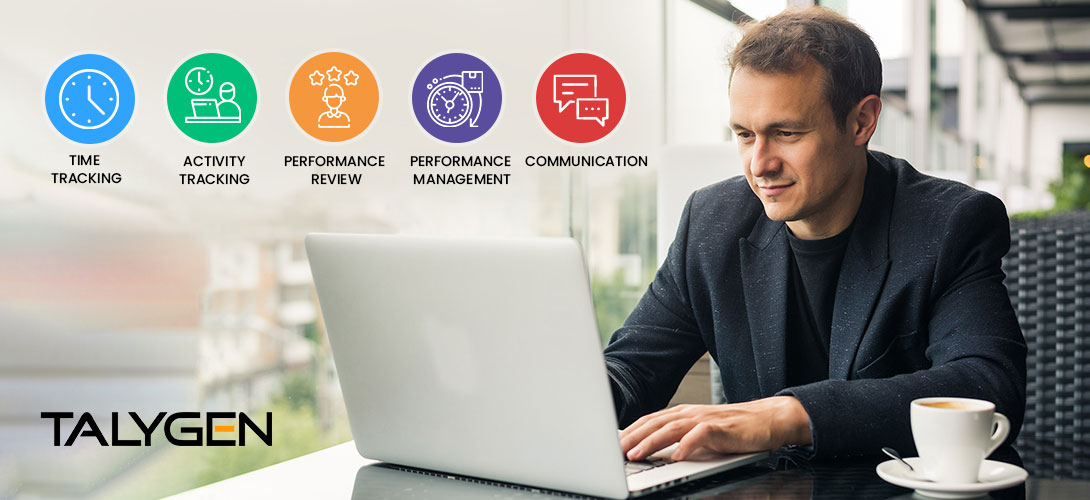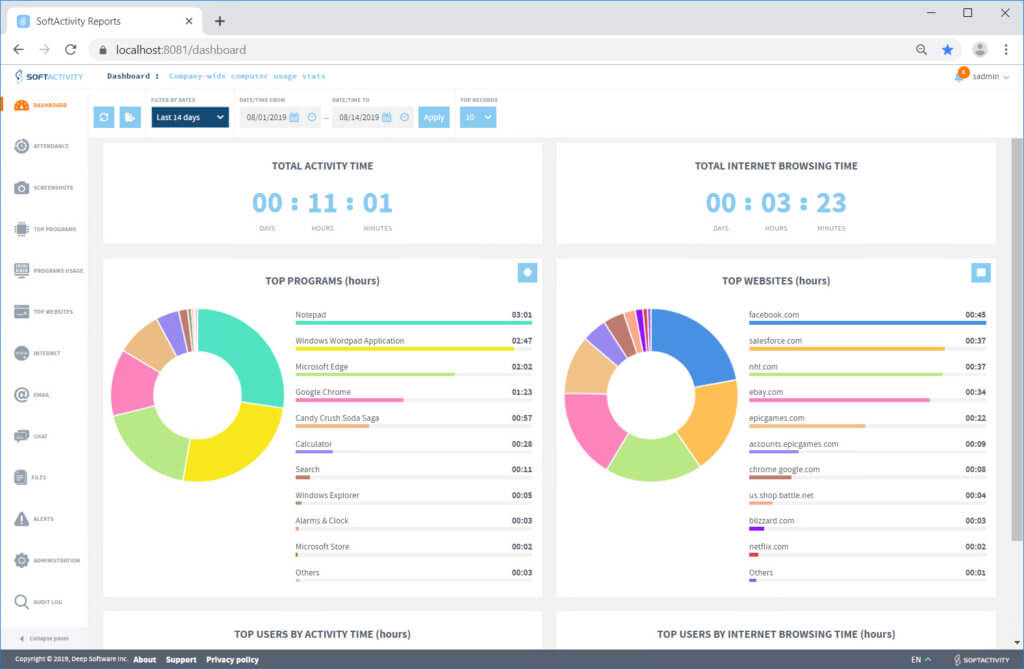The term"employee-monitoring software" is used to describe a software program that organizations utilize to keep track of their employees' activities when they work. Employers are able to collect data on a variety of aspects associated with employee behavior. This includes internet usage and application usage, keystrokes and screenshots. The primary purpose of employee monitoring software is to improve productivity, ensure conformity with policies, safeguard sensitive data, and address security concerns. There are numerous aspects to take into consideration when selecting employee monitoring software. Here are a few key points to take into consideration: Features - Determine what features your company needs. The most common features are monitoring activity, blocking websites keystrike logging, application usage tracking along with email monitoring and reporting. Prioritize the features you want to use based on your goals for monitoring.
Compliance and Privacy - Be sure that the software complies with legal and ethical guidelines when it comes to monitoring of employees. Learn about the applicable laws, regulations and laws in your region. Find software that offers flexible and transparent settings to protect the privacy of employees.
User-Friendliness - Consider the software's accessibility and user-friendliness. Simple user interfaces and easy setup procedures will speed up and speed up the process of implementation. Flexible dashboards and easy tools for reporting will assist you easily navigate the data.
Integrity and compatibility: Make sure that the application is compatible with your existing IT infrastructure, which includes the operating system, email client, project management tool, and collaboration platforms. The compatibility ensures that you can monitor your business without disrupting your day-to-day activities.
Data Security- Examine the software security measures to ensure the safety of the collected data. Data encryption, storage in a secure setting, access control, and compliance to security requirements are all vital. Be sure that the software provider is known for its strong data protection record and has robust security measures.
Scalability- The software should be able to scale up or down according to the size of your business. If you expect to grow your team or open new locations in the near future Choose a solution which is easily expanded to meet the changing requirements.
Reporting and Analytical Capabilities- Review the reporting and analytical capabilities of the software. Find features that provide comprehensive insights on employee productivity and time allocation. Customized reports and analytics can aid you in making informed choices and pinpoint areas for improvement.
Customer Support - Examine the quality and accessibility of the customer support provided by software vendors. You can assess their speed of response, accessibility as well as the technical support that they offer. A professional customer support staff will provide prompt assistance to any problems that arise.
Cost - Take into account the pricing structure like an annual fee or subscription, or dependent on the usage. Understanding the pricing structure and any additional costs such as support, updates or additional features is essential. Make sure you balance the cost of your product in relation to its value and features.
Transparency and Communication with Employees - Maintain clear communication and openness when dealing with employees in relation to the monitoring software. Define the reason as well as the scope and requirements of the surveillance. Discuss any concerns they might have and ensure they understand the ways in which they can be assured of their privacy.
If you consider these elements it is possible to make an informed decision and select a monitoring program that is compatible with the needs of your business while preserving the privacy of employees and legal requirements. View the top rated time tracking monitoring software for website examples.

What Are The Various Characteristics Of The Employee Monitoring Software?
Software for employee monitoring offers various options to monitor and analyze employee behaviour. Some features are common to all monitoring software for employees. It provides a detailed description of how employees utilize their time.
Keystroke Logging Keystroke logs track every single keystroke that employees make. It can find productivity bottlenecks, as well as detect unauthorized actions and gather evidence to aid investigations.
Screenshots and Screen Recordings Certain software programs capture screenshots or record the screens of employees on a regular basis. This feature is used to measure performance, ensure compliance, or to troubleshoot problems.
Internet Usage Tracking This feature allows employees to keep track of their internet activities, including the websites they visit, the searches they conduct and downloads. It assists in identifying excessive non-work-related internet browsing, security threats or policy violations.
This feature tracks all applications that employees use in the workplace. It gives an overview of the most frequently employed applications and flags any excessive or inappropriate use that is not approved.
Email Monitoring - Email monitoring allows employers to keep track of employee emails, including messages that were received and sent attachments, messages, and emails' content. It ensures compliance with corporate policies, prevents leaks of data, investigates any suspicious activity, and helps to ensure compliance.
File and Document Tracking- This feature monitors file access, modifications, and transfers. It assists in protecting sensitive information and track document collaboration.
Remote Monitoring: Employers have the ability to monitor employees remotely, or who are at various locations. Employers can track their activities and ensure efficiency regardless of physical location.
Productivity Analysis Monitoring software for employees has features for productivity analysis that give insights into employee patterns of work, their time allotment and productivity levels. These analyses allow for the identification of areas that can be improved, and also help to optimize workflow.
Analytics and Reporting- Robust tools for reporting and analytics generate detailed reports based on the information that has been collected. These reports provide valuable insight into employee performance as well as time management and the allocation of resources.
Compliance and Policy Management: Some software solutions come with features to ensure compliance with both company policies and regulations. Employers can establish and enforce policies of their company on acceptable computer usage.
Alerts/Notifications: Notifications and alerts inform employers or managers whenever certain events or activities happen. You can use them to alert you about unusual behavior, like excessive internet usage or attempts to gain access to restricted sites.
You should be aware that different employee monitoring systems may have different features and functionalities. When selecting software, make certain that the features you select meet the goals of your monitoring as well as in compliance with the ethical or legal guidelines that apply to your area of operation. Follow the best employee monitoring company for more tips.

What Is The Best Software For Tracking Employees? Does It Conform To The Compliance And Privacy Law
The software's capability to adhere to the privacy and compliance laws is critical. Software for monitoring employees must conform to particular regulations regarding privacy and compliance. While these may vary in accordance with the country of origin however, a few of them are generally accepted. Monitoring software for employees usually includes features that allow employers to clearly communicate their monitoring guidelines to employees clearly. It is possible to issue written notices or obtain consent using consent forms. Also an employee manual that provides guidelines for monitoring may also be implemented.
Transparent Monitoring policies - Employee monitoring programs encourage transparency since they ensure that employees know the kind of information that is collected, the purpose for monitoring is and what extent monitoring activities are performed. Comprehensive, clear policies can help employees better know their rights in terms of privacy and the boundaries for monitoring.
Data Minimization: To ensure that employee monitoring programs are in compliance with privacy laws, they often follow the principle of data minimization. The software gathers and stores only the necessary data, while eliminating unnecessary or overly detailed information. The software encourages compliance by restricting the information stored to only that which is required for monitoring.
Anonymization & Aggregation Some employee monitoring software anonymizes / aggregates data for further protection of employee privacy. Anonymization removes the personal information of an individual (PII), making it impossible for data to be associated to a particular person. Aggregation makes use of data from many employees to produce information for a large group without identifying anyone.
Secure Data Storage and Encryption - The protection of data is an important concern for monitoring software designed to monitor employees. Secure encryption and data storage are used to protect the data from access by unauthorized persons or accidental disclosure. This also includes safeguarding data on the move and at rest.
Access Controls and Restricted permissions - Employee monitoring software provides access control with greater granularity to ensure compliance. This allows employers to limit the number of authorized users that have access to monitoring information for instance HR employees or the designated administrator.
Rights of Employees RightsRespecting the rights of employees means adhering to compliance and privacy laws. Employee monitoring software includes features that permit employees to see their own monitoring information and request changes. Employees have the ability to make use of their rights in the event of privacy violations and file complaints.
Conformity to Data Protection Regulations - Employee monitoring software was created to be in compliance to data protection laws such as the General Data Protection Regulation in the European Union (GDPR) or the California Consumer Privacy Act in the United States (CCPA). Compliance means implementing safeguards for data privacy and respecting the rights of data subjects and ensuring the legality of processing.
Although employee monitoring software can be an excellent tool for ensuring compliance, it is important that organizations consult with lawyers and stay informed about relevant laws and regulation in their region of jurisdiction. A comprehensive strategy for complying with privacy and compliance legislation is necessary, and it extends beyond the software. It includes clear policies as well regular monitoring and education of employees. Read the recommended time tracking monitoring services for blog recommendations.
